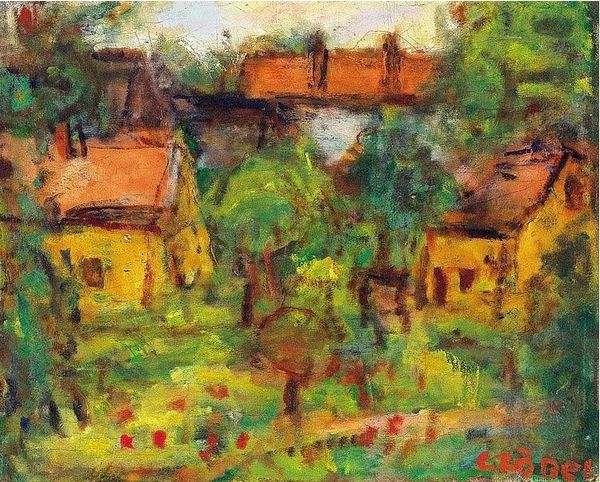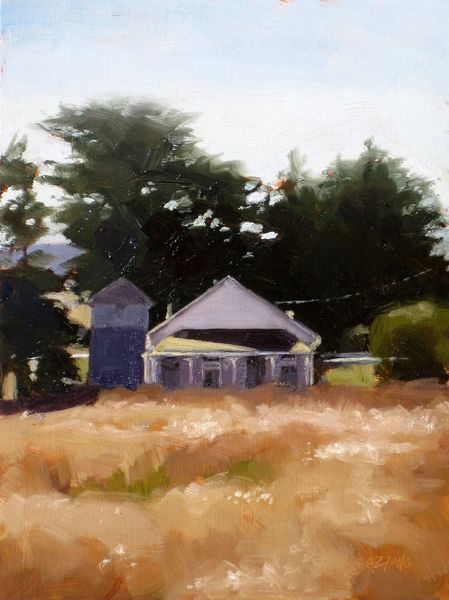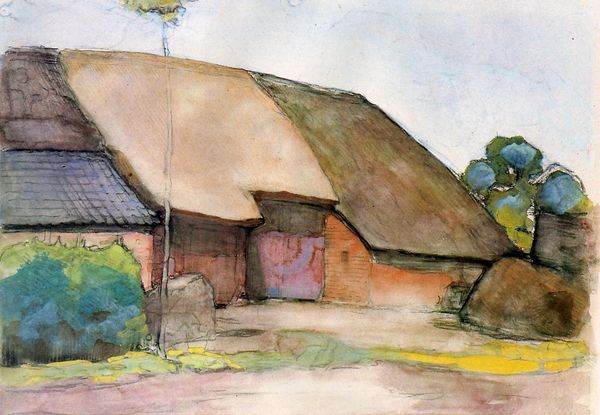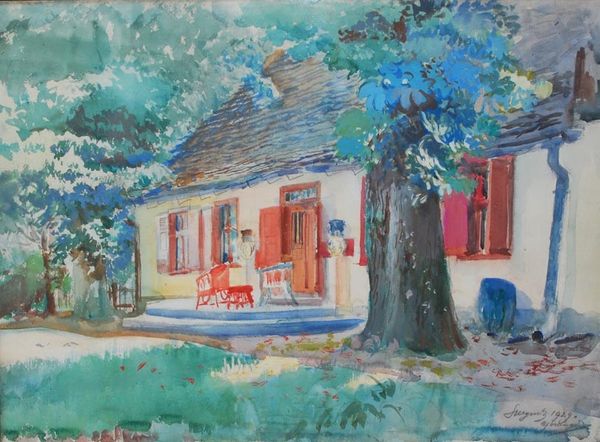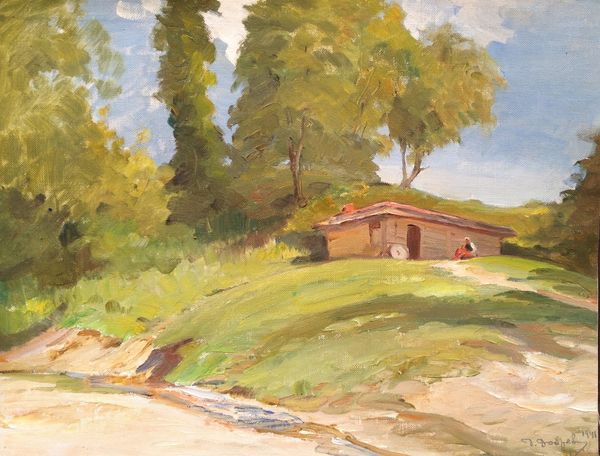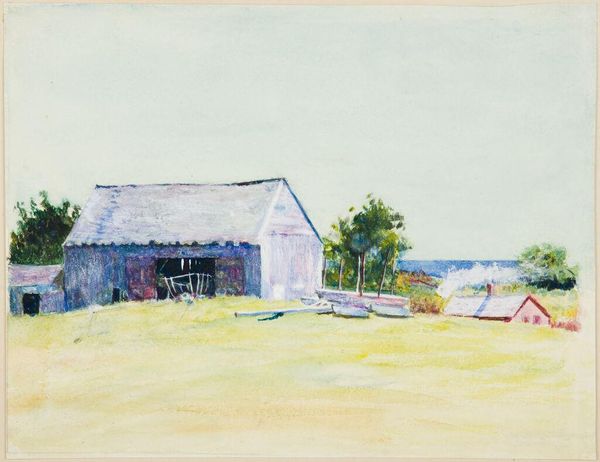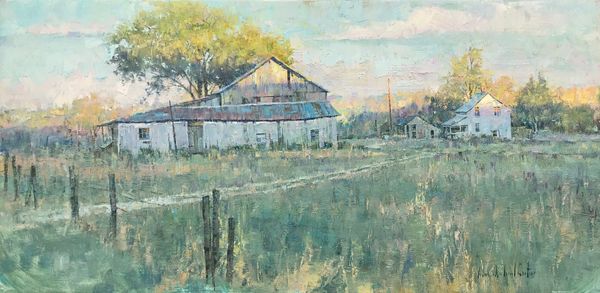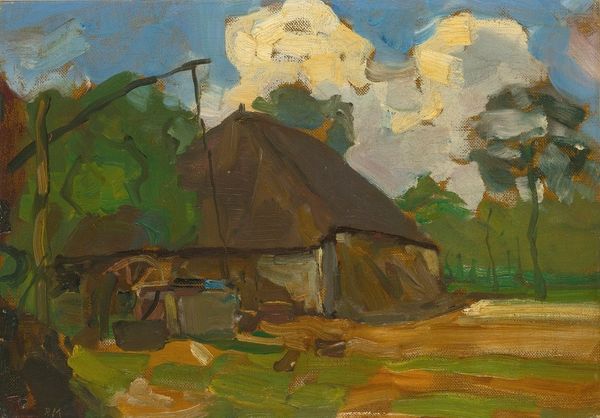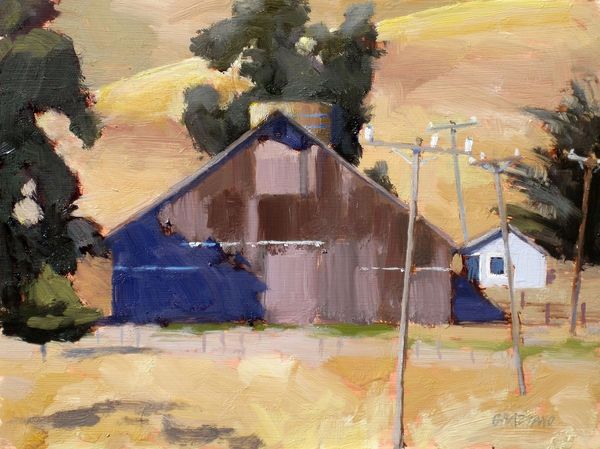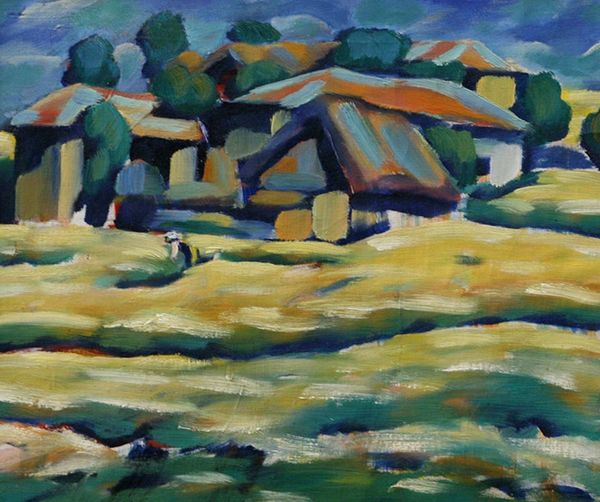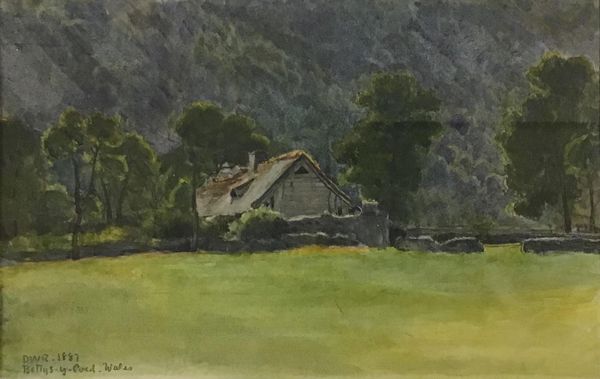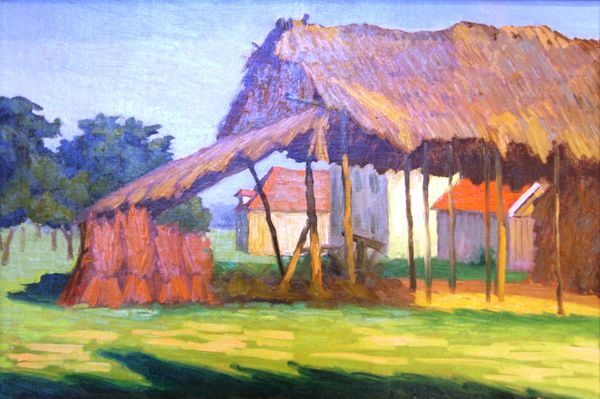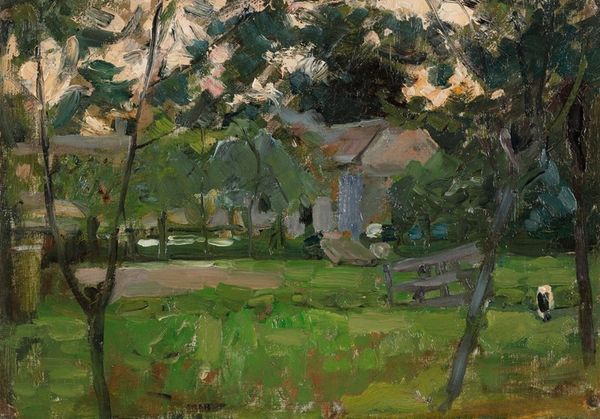
Dimensions: 40 x 50 cm
Copyright: Creative Commons NonCommercial
Curator: There's an air of melancholy about this watercolor. It's titled "Abandoned estate at the Belinsko selo", created in 1993 by Alfred Freddy Krupa. The paintwork is loose, evocative... but still, there's a sadness in the scene. Editor: Yes, immediately, I’m struck by that overwhelming stillness, an impression amplified by the hazy rendering of what seems to be a house with two peaked roofs in the shadow of old trees. Even the orange on the façade looks muted, like rust. It feels forgotten. Curator: Krupa was working *en plein air* here, and the impressionistic touches amplify that mood; he really captures that quality of natural light interacting with the dilapidated architecture. The blurring of outlines, almost suggestive of heat haze... Editor: You know, "abandonment" carries so much weight, historically. The economic shifts of the 90s in post-socialist countries, the waves of migration, the neglect of rural spaces... all of that seems to whisper through these quiet strokes of paint. Are there other instances in Krupa’s works where abandonment appears as a theme? Curator: Indeed, many other works address themes of war and its repercussions; his family history bears heavily on these works, as his father was killed during World War II. It's as though these deserted structures stand as silent witnesses to past traumas. Watercolors especially have been known as a means to carry the most heartwrenching and poignant content through landscapes or portraits, such as this one. Editor: The very choice of watercolor is revealing as well. Its fluidity echoes the idea of things fading, disappearing into the past. The image itself almost feels like a memory, indistinct and fading with time. You get a sense that if a stiffer, harsher, artistic style or material had been selected instead, it would have portrayed this idea, but perhaps would've portrayed it as simply anger or hatred for what was happening instead. Curator: A poignant observation, really. These gentle hues become vessels holding historical realities of trauma and post-war decay, turning this unassuming estate into a potent symbol. The transparency and luminosity typical of watercolor painting are apt metaphors for a culture whose memory is ever so gently dissolving in front of the new, now that you mention it. Editor: Thinking about that context certainly adds depth to what might otherwise be seen as simply an aesthetic study of a decaying building. This image is also charged by cultural shifts of this time in that area of the world, reminding viewers to ask about other meanings or feelings brought up by the picture. Curator: Right—that soft touch transforms the image into a vehicle for historical remembrance, ensuring this memory, regardless of how painful, remains to this day in museums and public venues around the world. Editor: A very gentle form of bearing witness.
Comments
No comments
Be the first to comment and join the conversation on the ultimate creative platform.
